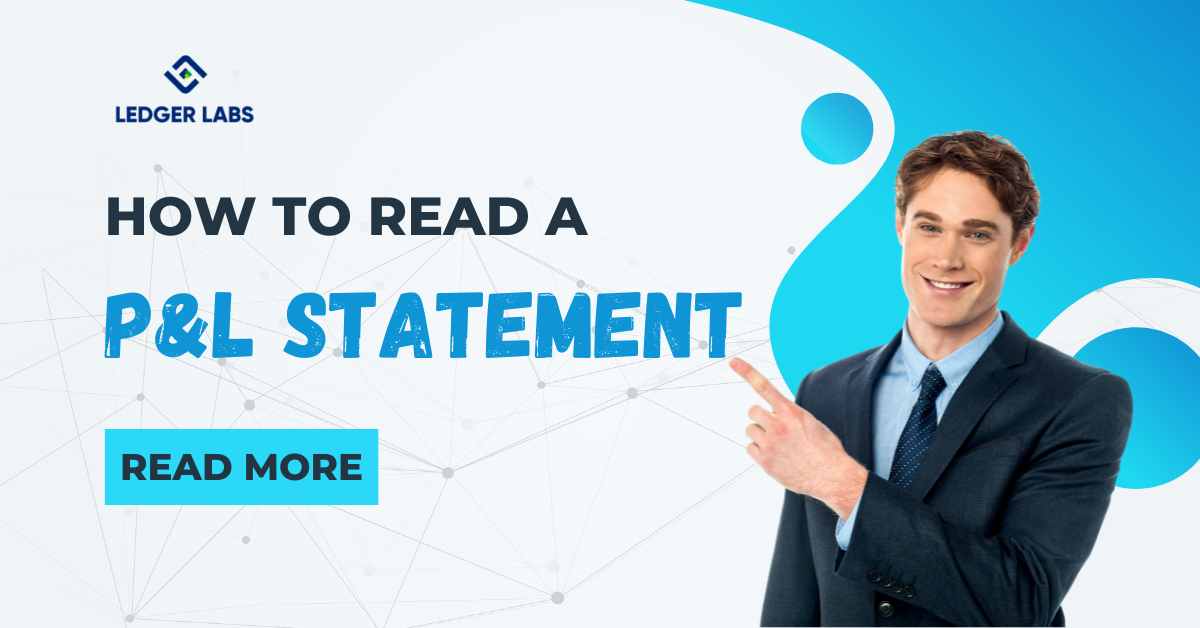You may already know about the P&L or a profit and loss statement. This is a type of financial statement representing what it states, whether an organization has earned profit over the year or bore a loss. This financial statement is one of the most crucial data showing the actual position of the business in the previous year. Hence, the same is also used by entrepreneurs to manage businesses. P&L and balance sheet are two of the most important statements used by businesses to project better in the future.
Although the P&L statement is quite popular, people face a hard time understanding it. One of the most common queries related to financial statements is how to read a profit and loss statement. We will be addressing this question with the help of this blog. Here, you will find a detailed solution about the reading process of the P&L statement. However, for a better P&L understanding, we will start with its definition, its purpose, and other related material and then sum up the reading part.
What is a Profit & Loss Statement: The Definition

Firstly, let’s know in brief about the P&L statement or profit and loss statement. A profit and loss statement is a type of financial statement that defines and lists all the expenses borne by an organization as well as the revenue earned during the specific tenure. Hence, it can be said that the statement is divided into two main parts; viz. expenses and revenue.
The expenses part contains all the numbers related to the spending of the business. This includes all kinds of expenses during the defined period. The next or the revenue part contains all the numbers related to the money brought in via sales and other heads.
As stated earlier, the P&L statement shows whether the business had a profit or a loss in the period. For the same, the total cost of manufacturing and providing the product or services to the buyer is deducted from the total revenue. The number thus arrived is known as the gross profit for the organization. Similarly, when you deduct the total expenses from the gross profit you arrive at the net profit/loss or the actual profit/loss borne by the company.
When all the financial statements viz, the statement of P&L, balance sheet, and the cash flow statement are brought together, these show the exact performance or position of the business during a certain period.
At times, people also get confused that the statement of P&L and balance sheet are one and the same thing. But the reality is entirely different. So, before understanding how to read a profit and loss statement, let’s find out the difference between these two financial statements below.
P&L and Balance Sheet: The Difference
Before proceeding to how to read a profit and loss statement, there is one more thing you should know. The Statement of P&L and Balance Sheet are parts of the overall financial statements of a business. However, the two are quite different. While the former allows you to ascertain the profit or loss data of an organization, the latter presents its assets and liabilities.
Hence, if you consider the Balance Sheet, it will give you data about the assets and liabilities of the business on or by a particular date. The balance sheet also contains the amount of net profit ascertained using the P&L statement.
To sum up, we can say that the P&L statement shows the performance of the business during a period whereas the Balance Sheet shows the actual status of your business on a specific date.
Now that the difference between P&L and balance sheet is clear, let’s know who actually prepares the statement of P&L and approves it.
Who Actually Prepares or Approves the P&L Statement?
Why you may be wondering how to read a profit and loss statement can be because it’s quite technical and sensitive. Additionally, the importance of accuracy required in a P&L statement, makes it the responsibility of the higher level management to create the P&L statement.
Generally, in every small or large-scale business, it’s the responsibility of the CEO (chief executive officer) or the CFO (chief financial officer) to create the statement. As such top executives have a better grip over the P&L understating, the responsibility is assigned to them only. However, the CFO or the CEO may hand the task of creation to a Chartered Accountant or the Company Secretary to create the statement and bring the data into one place and then cross-check everything as required before approving the same.
If the company needs to present the P&L statement to the members of the board, investors, etc. then it becomes the responsibility of the same top company representative to present the data as requested.
By now, it must be clear what is a P&L statement, hence, now it’s time to understand what data and numbers go into the statement.
Easy and Affordable Accounting

How to Read a Profit and Loss Statement: The Components
It’s hard to sum up the expenses and revenue from various overheads and sources. Hence, for a better P&L understanding, the statement is divided into various sub-categories. Let’s have a look at these subcategories and understand how to read a profit and loss statement:
1. Revenue (+)
The revenue part comes at the top of the P&L statement. This sub-category contains all kinds of receipts and revenues received from different sources. This data can either be collected using accrual accounting or cash accounting, as desired by the organization. The data under revenue marks the total receipts for a specific period only(the period of the statement).
2. Cost of Goods Sold (-)
Next comes the Cost of goods sold or the COGS. This sub-category contains the total cost of producing, operating, and providing the goods. All kinds of expenses underwent for this process are included under the COGS.
3. Gross Profit
When the total amount of COGS is deducted from the total revenue generated, you get the figure of gross profit. This data is not the exact figure that shows the actual profit as some other deductions are yet to be included.
2. Expenditure (-)
To help you with how to read a profit and loss statement, the expenditure is divided into two categories. These are the direct (wages, labor, etc.) and indirect expenses (rent, maintenance, bills, etc.).
3. Miscellaneous Earnings (+)
Next comes all the other miscellaneous earnings gained by the business during the tenure. These are the earnings gained from sources other than those related to the business’s actual operations (sales).
4. Interest(s) (-)
If you paid any type of interest driving from your borrowings like interest on loans, credit cards, etc. then the same is listed under this sub-category.
5. Profit After Tax
When you deduct the total interest from the data, you get the total profit earned before tax and after interest.
6. Tax (-)
After this, the total tax to be paid or previously paid by the business is deducted. This includes all kinds of taxes paid on incomes.
7. Net Profit/Loss
Once you deduct the total taxes, you get the Profit After Tax and Interest. This is the actual profit earned by the company in the tenure. If this value is negative, then this means that your business had to bear a loss.
Now that you have figured out every component of the statement. It must be clear how to read a profit and loss statement. Every specific component and the values derived from these components can easily help get the required answers. Using these, you can ascertain the financial position (profit or loss status) of any business. However, the last section of this write-up will help you understand more about the statement of P&L.
What is the Actual use of a P&L Statement Professionally?
The regular purpose of a P&L statement must be clear by now. However, if considered professionally and financially. The statement plays a vital role in helping the management with the growth of the business.
Once figured out how to read a profit and loss statement, the management can ascertain the following:
- Whether the company is earning a suitable gross profit that at least covers the cost of goods sold.
- How many sources are present with the business that is bringing in the revenue?
- What are the major sources from which the funds of the company are being exhausted?
- Is there something that the management needs to take care of right away for the growth of the business?
It becomes quite easy with the P&L understating to ascertain the key factors associated with the business. You can mend or rectify these factors for the good of your business if possible.
Summing Up: How to Read a Profit and Loss Statement
If you still have doubts about how to read a profit and loss statement, you can communicate with the financial experts at The Ledger Labs. We will help you get the perfect answer to your queries and help you understand what is a P&L statement. Additionally, if you are a business owner or manager, then Ledger Labs can also help you with Accounting and Bookkeeping Services. We will explain all the loopholes in the business and work with you for its betterment and growth.







